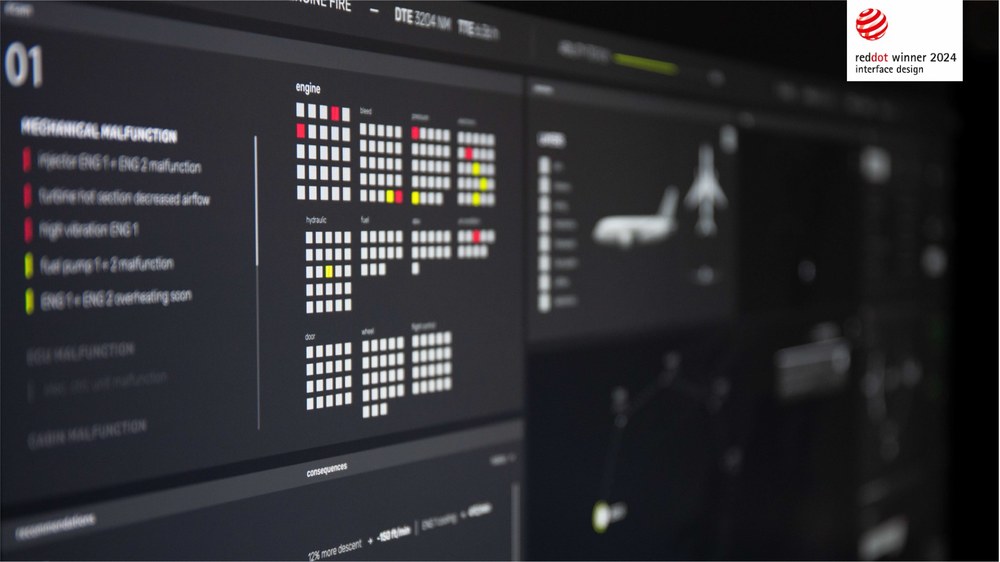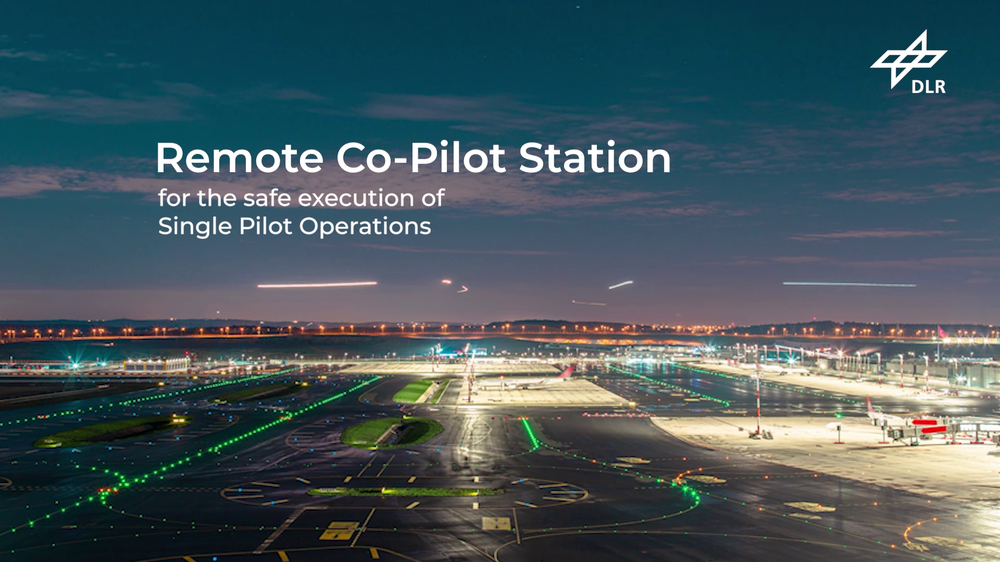DLR project 'Next Generation Intelligent Cockpit' wins prestigious Red Dot Design Award



- The DLR project was honoured with the Red Dot Award for the design of a remote co-pilot station.
- The Remote Co-Pilot Station enables pilots to be supported from the ground during flight if required.
- The project attaches great importance to user-centred design and involves pilots and other stakeholders in the development at an early stage.
It is one of the most prestigious design competitions in the world - the Red Dot Design Award. The team of the Next Generation Intelligent Cockpit (NICo) project at the DLR Institute of Flight Guidance is delighted to receive this award in the ‘Brands & Communication Design’ category in 2024. The team developed and designed a remote co-pilot station. In the future, co-pilots will be able to support one or more aircraft in the air from the ground at such workstations if required. This year's submissions were assessed by 24 international design experts.
Research into the cockpit of the next generation
In the DLR project Next Generation Intelligent Cockpit (NICo), scientists at the institute are researching Single Pilot Operation (SiPO) and Extended Minimum Crew Operations (eMCO) for commercial aircraft. Various concepts, resulting technologies and workplace solutions are being developed and a risk assessment prepared. One possible solution is the current award winner: the newly developed remote co-pilot station. At this workstation, a pilot can accompany the flight from the ground and support the "flying pilot" in the air. Using a remote co-pilot requires rethinking of traditional cockpit layouts in the aircraft and considering the necessary control station for the co-pilot on the ground. These functions are not only being developed at DLR for single-pilot operation in the long term, but are also intended to increase safety in the current two-pilot cockpit.
It is rather unusual for research results to win a design prize. However, the design of the user interfaces of new aviation systems is a decisive factor for their usability and acceptance. "It was important to us to create a design that is functional and already feels like a finished product, even though we are still in the research phase," say DLR industrial designers Jari Küls and Marc Findeisen. Both have been working intensively on the design of the now award-winning system over the past few years. The fact that their research work has now been recognised both scientifically and in terms of design makes the project team particularly proud.

Remote Co-Pilot Station for safe Single Pilot Operations
Your consent to the storage of data ('cookies') is required for the playback of this video on Quickchannel.com. You can view and change your current data storage settings at any time under privacy.
Scientific exchange and close collaboration with pilots
The underlying scientific work has already been presented at several national and international conferences. In addition, the project team is in constant dialogue with pilots. "Close contact with future users is extremely important to us," emphasises Christian Niermann, who has been leading the project since 2020. Especially in an innovative and safety-critical field of research such as single pilot operations, it was particularly important for the project management to involve future users and other stakeholders in the development from the outset and to remain in constant dialogue with supporters and critics of the new technology.
Cooperation with Osnabrück University of Applied Sciences
The DLR team has been researching the Remote Co-Pilot Station together with Osnabrück University of Applied Sciences since 2021. "It was an exciting challenge for us to contribute our expertise in the field of usability and user experience to this safety-critical aviation project," says Prof Thomas Hofmann, Professor of Product Design at Osnabrück University of Applied Sciences.
Future prospects for the NICo project
Following the conclusion of the NICo project, the Remote Co-Pilot Station and the underlying research work will be continued in follow-up projects. "The Single Pilot Operations and Extended Minimum Crew Operations concepts are currently in a very exciting research phase," adds Christian Niermann. "As a neutral research organisation, we at DLR will continue to investigate the advantages and risks of these new concepts in the future."
